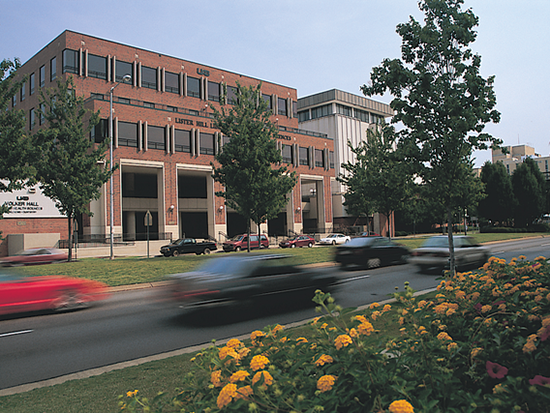University Of Alabama At Birmingham Libraries head a huge fundraising initiative for the Historical Collections Gallery
The libraries at the University of Alabama at Birmingham are home to incredibly rich historical collections, according to UAB Libraries Dean Kasia Gonnerman. But without adequate space to showcase these unique treasures, the physical collections do not receive sufficient exposure.
“There are currently several small, dispersed locations that we use to the best of our ability to curate small-scale exhibitions, but nothing really significant enough to give the collections the justice they deserve,” Gonnerman said.
This will soon change. UAB has begun a $500,000 fundraising initiative for the Historical Collections Gallery, with funds helping cover construction costs to create a large exhibition area on the second floor of the Lister Hill Library.
The gallery will be 3,000 square feet and will house rotating thematic medical exhibits. The goal is for these exhibitions to rotate every six months and to be connected to programming to help reinforce the educational and outreach aspects of the gallery.
“We envision that we will offer guided tours, podcasts, audio guides — all kinds of means to offer a dynamic, multimodal, engaging experience,” Gonnerman said. “We are planning to provide an immersive experience to the gallery visitors.”
Father and Son — the collections’ naming donors
Dennis G. Pappas Sr., M.D., and his son Dennis G. Pappas Jr., M.D., together have made a significant commitment to name the gallery, pending approval by the Board of Trustees of the University of Alabama System.
Both Pappas Sr. and Pappas Jr. specialize in otolaryngology — the study of the ear, nose and throat. Pappas Jr. still practices in downtown Birmingham, and Pappas Sr. practiced in Birmingham for nearly 60 years before retiring five years ago.
Pappas Sr. says he felt led to donate because it is important to preserve medical history and learn from it.
“It teaches what has been done and what the future is going to be like,” Pappas Sr. said. “It’s important to know what has happened, so you don’t repeat the mistakes of the past.”
Historical collections and ancient artifacts were an important part of Pappas Sr.’s life during his time as a physician. As he studied otolaryngology — specializing in the ear — he felt that it was important to learn the history of his profession. His collection of ancient otolaryngological artifacts began during his deployment in Germany with the U.S. Army.
In the past 40 years, he has garnered a vast collection and has donated more than 400 pamphlets and books and more than 800 unique artifacts related to otolaryngology.
“I’m just absolutely thrilled that the gallery will be named after [Dr. Pappas] because he truly cares about UAB Historical Collections,” Gonnerman said.
The gallery exhibitions will serve an important educational, research and academic purpose for both the UAB and Birmingham communities.
“We envision that local schools in the Birmingham area will take an opportunity to bring their students to enhance their learning experience,” Gonnerman said.
Gonnerman plans to use the Historical Collections Gallery to collaborate with other collections in the country, specifically those with a focus on the history of medicine.
“Exhibitions will be complemented by events for internal and external visitors, such as historical lectures or celebrations of significant anniversaries, and curricular developments, such as classes co-taught by the Historical Collections faculty with other academic departments and exhibits co-curated with other schools and colleges,” Gonnerman said.
The gallery will feature collections from transformational moments in history from the Reynolds-Finley Historical Library, the Alabama Museum of Health Sciences and the UAB Archives.
The Reynolds-Finley Historical Library houses more than 20,000 rare books and manuscripts, American Civil War medicine collections, and handwritten documents by nursing pioneer Florence Nightingale and U.S. President George Washington. The Alabama Museum, with more than 15,000 artifacts, boasts many unique objects, including Renaissance-era ivory anatomical manikins, believed to be one of the largest collections owned by a museum, and 19th-century wax anatomical models purchased for the opening of the Medical College of Alabama in Mobile, the predecessor of the UAB Marnix E. Heersink School of Medicine. The archives hold the university’s institutional memory and many manuscript collections of local health care practitioners and corporations.
“I believe the gallery will be absolutely transformative to how we publicize, showcase and curate our unique collections,” Gonnerman said.

